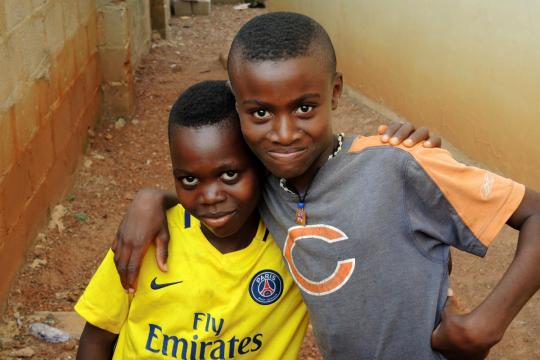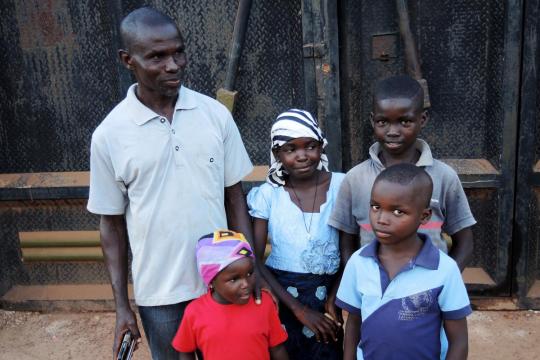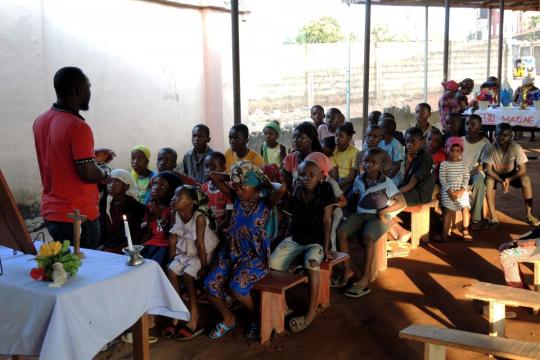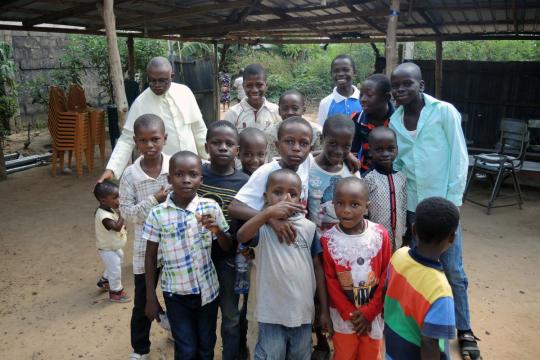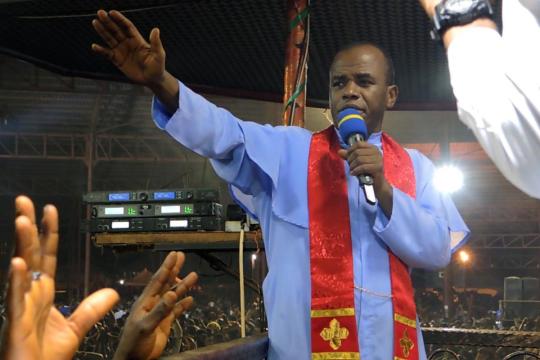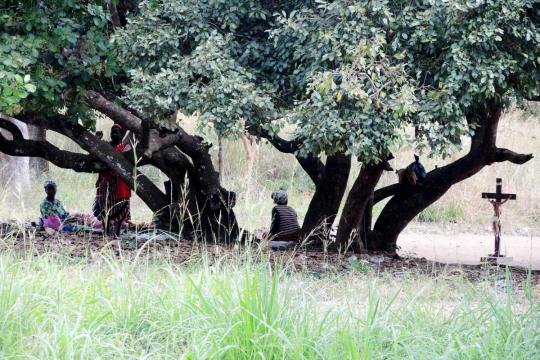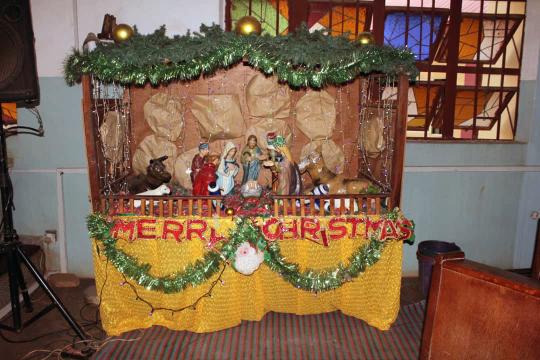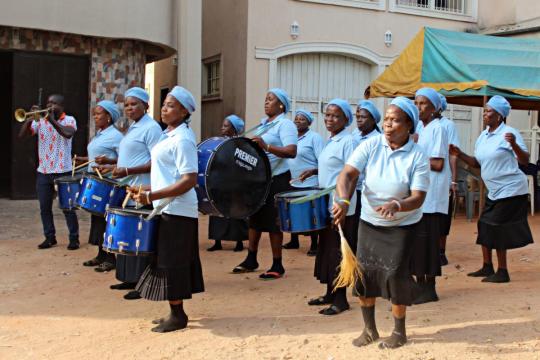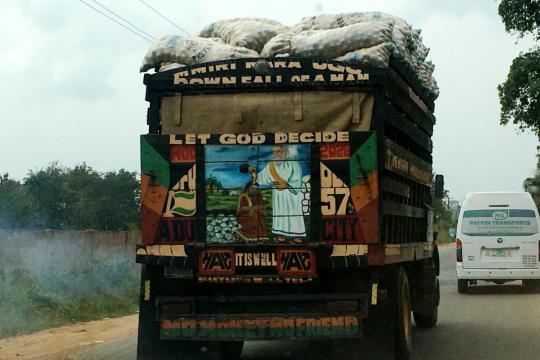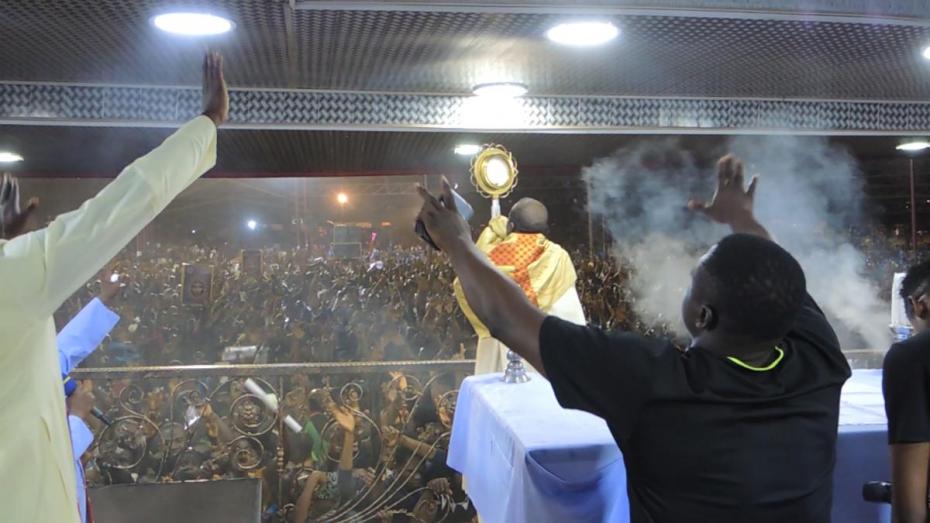
Nigeria, the most populous country in Africa, comprises peoples from hundreds of different cultures who were united under common political rule only in 1914. Achieving unity is an ongoing political project, given that Nigerian peoples’ identities as members of particular ethnic groups remain strong. Though use of the English language helps unite an increasingly modern country, Nigerians also speak hundreds of distinct languages and dialects in many of their daily encounters, and work to honor many of the traditional cultural practices of their ancestors.
The religious context of Nigeria varies from place to place. Roughly half of the population is Muslim, and half is Christian. Only a little over a century since Christianity began to be accepted in Nigeria (Islam has a longer presence in the north), just a tiny fraction of the population identifies exclusively or primarily with an indigenous traditional religion. Still, as the articles here show, traditional beliefs continue to shape the practice of Catholicism in Nigeria in distinctive ways.
In the north, among the Hausa-Fulani peoples, Islam is a dominant force, whereas in the south, Christianity is the dominant religio-cultural force. That division creates one of the most troubling fault lines in the country today.
The majority of Christians in Nigeria belong to Protestant and African Independent Churches. Nonetheless, given its huge overall population, Nigeria is home to some 29 million Catholics, the twelfth largest population of Catholics in the world, and the second largest population of Catholics in Africa.
The entries on the Catholics & Cultures site at present explore the religious lives of members of the Igbo ethnic group, particularly those who live in and around the city of Enugu, in south-central Nigeria. Enugu, like the rest of Igboland, is a Catholic stronghold, home to the largest Catholic seminary in the world.
Nigeria is a young country demographically. Its relatively small proportion of elderly people and large proportion of children and young people contribute to the sense of vibrancy that is evident in the Church and in other facets of life. Read more...
National Demographics
- 1 United Nations, Department of Economic and Social Affairs, Population Division, World Urbanization Prospects: The 2018 Revision, Online Edition (New York: United Nations, 2018).
- 2 United Nations, Department of Economic and Social Affairs, Population Division, International Migrant Stock 2020 (New York: United Nations, 2020).
- 3 Data as of 2021. United Nations Office on Drugs and Crime, "Intentional Homicide," United Nations, Accessed April 9, 2024; United Nations Office on Drugs and Crime, Global Study on Homicide 2023 (Vienna: United Nations, 2023).
- 4 "2023 Corruption Perceptions Index," Transparency International, Accessed April 9, 2024.
- 5 United Nations Children's Fund, The State of the World's Children 2023 (Florence: UNICEF Innocenti – Global Office of Research and Foresight, 2023).
- 6 International Telecommunication Union, "Individuals using the Internet (% of population)," The World Bank, Accessed April 24, 2024.
- 7 Poverty and Inequality Platform, "Poverty headcount ratio at $2.15 a day (2017 PPP) (% of population)," The World Bank, Accessed April 24, 2024.
- 8 World Economic Forum, Global Gender Gap Report 2023 (Geneva: World Economic Forum, 2023).
- 9 As Pew describes it, "Government restrictions on religion include laws, policies and actions that regulate and limit religious beliefs and practices. They also include policies that single out certain religious groups or ban certain practices; the granting of benefits to some religious groups but not others; and bureaucratic rules that require religious groups to register to receive benefits." As noted on pp. 45-47 of the report, the index summarizes data from 19 sources. The index does not differentiate whether the laws are directed toward Catholics. Pew Research Center, Globally, Government Restrictions on Religion Reached Peak Levels in 2021, While Social Hostilities Went Down (Pew Research Center, 2024).
- 10 As Pew describes it, "Social hostilities include actions by private individuals or groups that target religious groups; they also include actions by groups or individuals who use religion to restrict others. The SHI captures events such as religion-related harassment, mob violence, terrorism/militant activity, and hostilities over religious conversions or the wearing of religious symbols and clothing." As noted on pp. 45-47 of the report, the index summarizes data from 19 sources. The index does not differentiate whether the hostilities are directed toward Catholics. Pew Research Center, Globally, Government Restrictions on Religion Reached Peak Levels in 2021, While Social Hostilities Went Down (Pew Research Center, 2024).
Catholic Demographics
These statistics are derived from the Vatican's official publication, Statistical Yearbook of the Church 2022 (Vatican City: Librera Editrice Vaticana, 2024). The numbers may differ from data reported by other sources on this site.
Related Articles
- Inculturation of Liturgical Music in the Roman Catholic Church of Igbo Land: A Compositional Study
- Communicating the Justice and Peace of God in Africa Today
- Relationships Between Religious Denomination, Quality of Life, Motivation and Meaning in Abeokuta, Nigeria
- Student Experiences with Violence in Schools: Insights from a Survey in Two Catholic Schools for Girls in Nigeria
